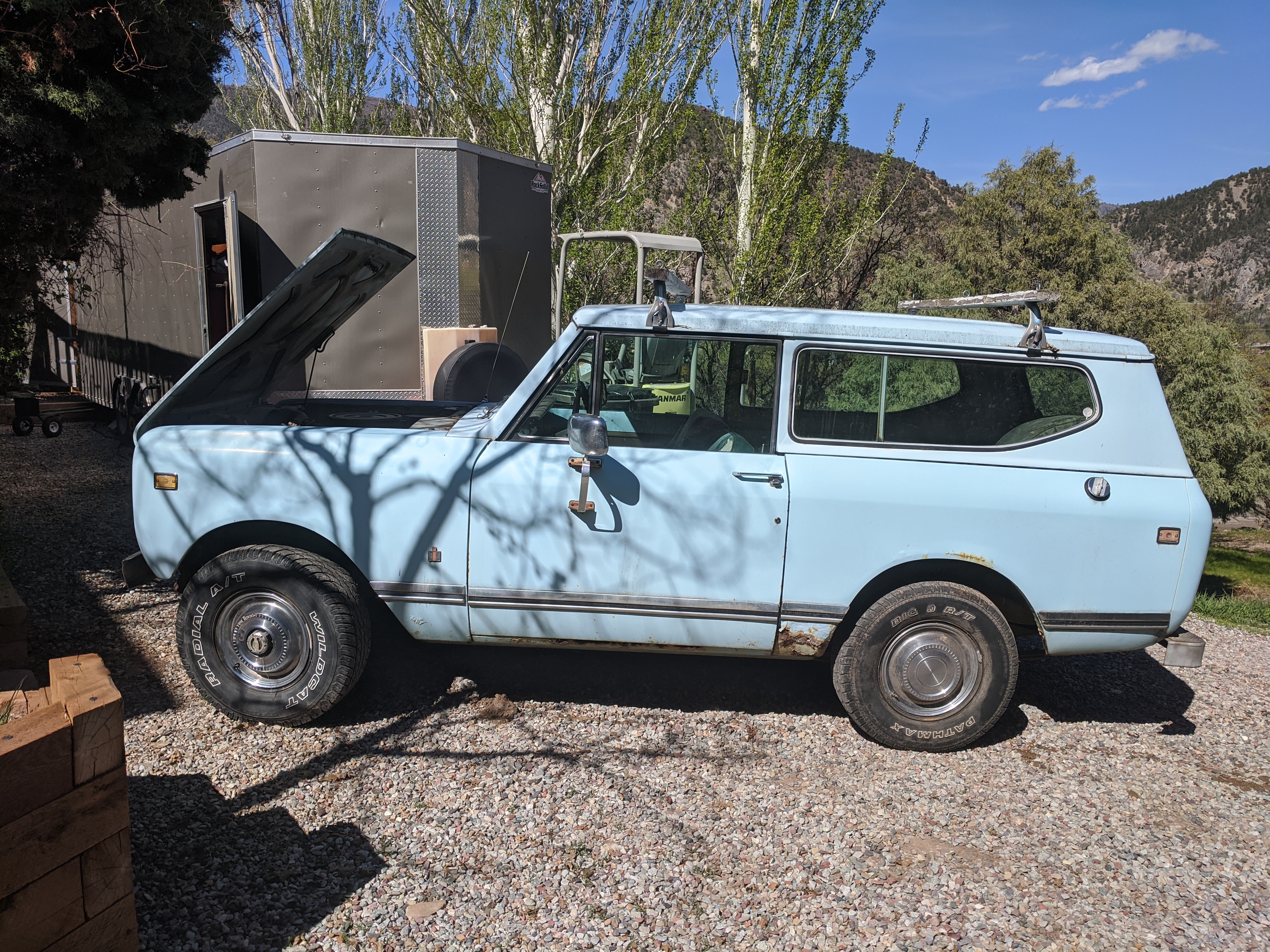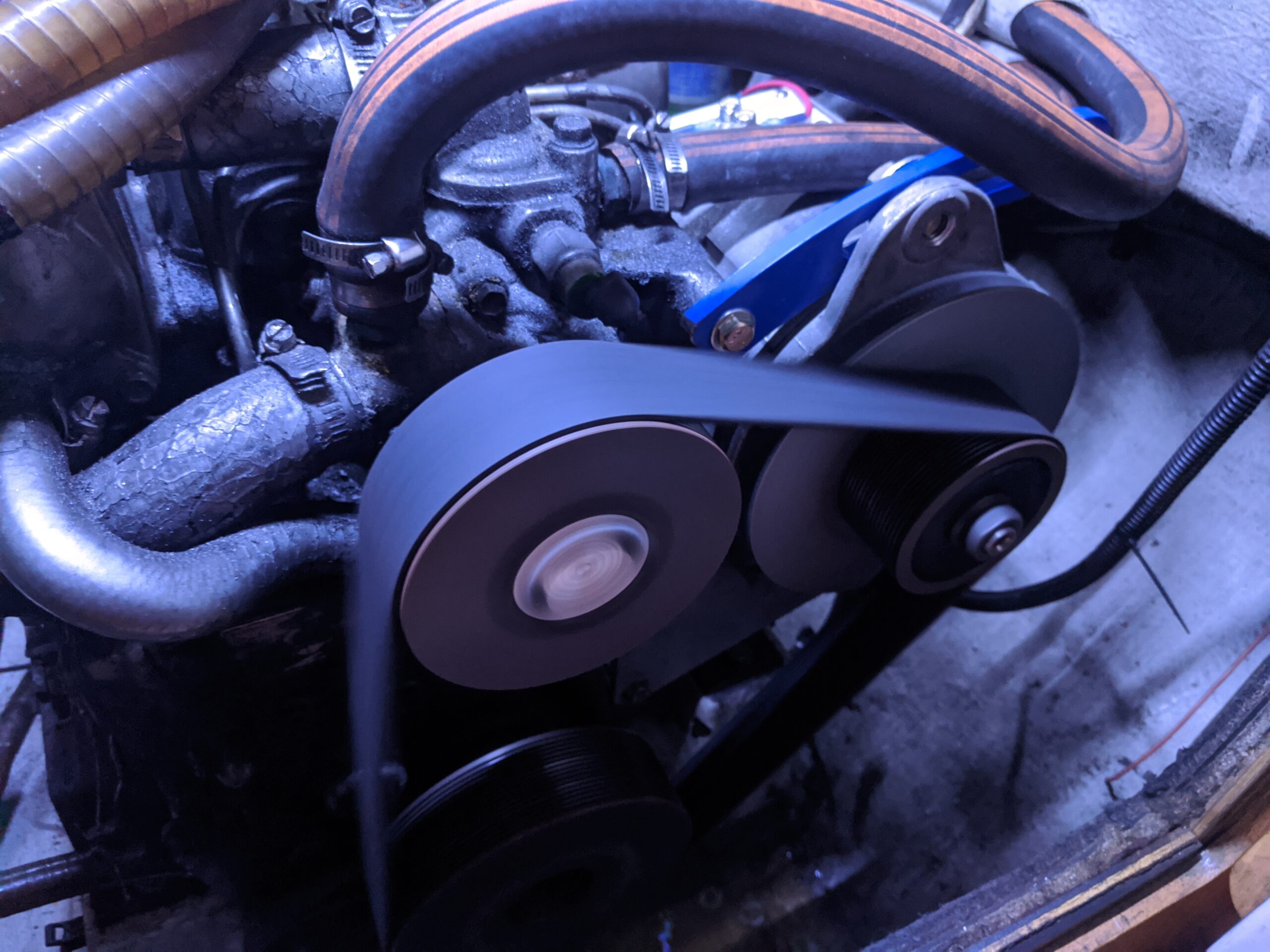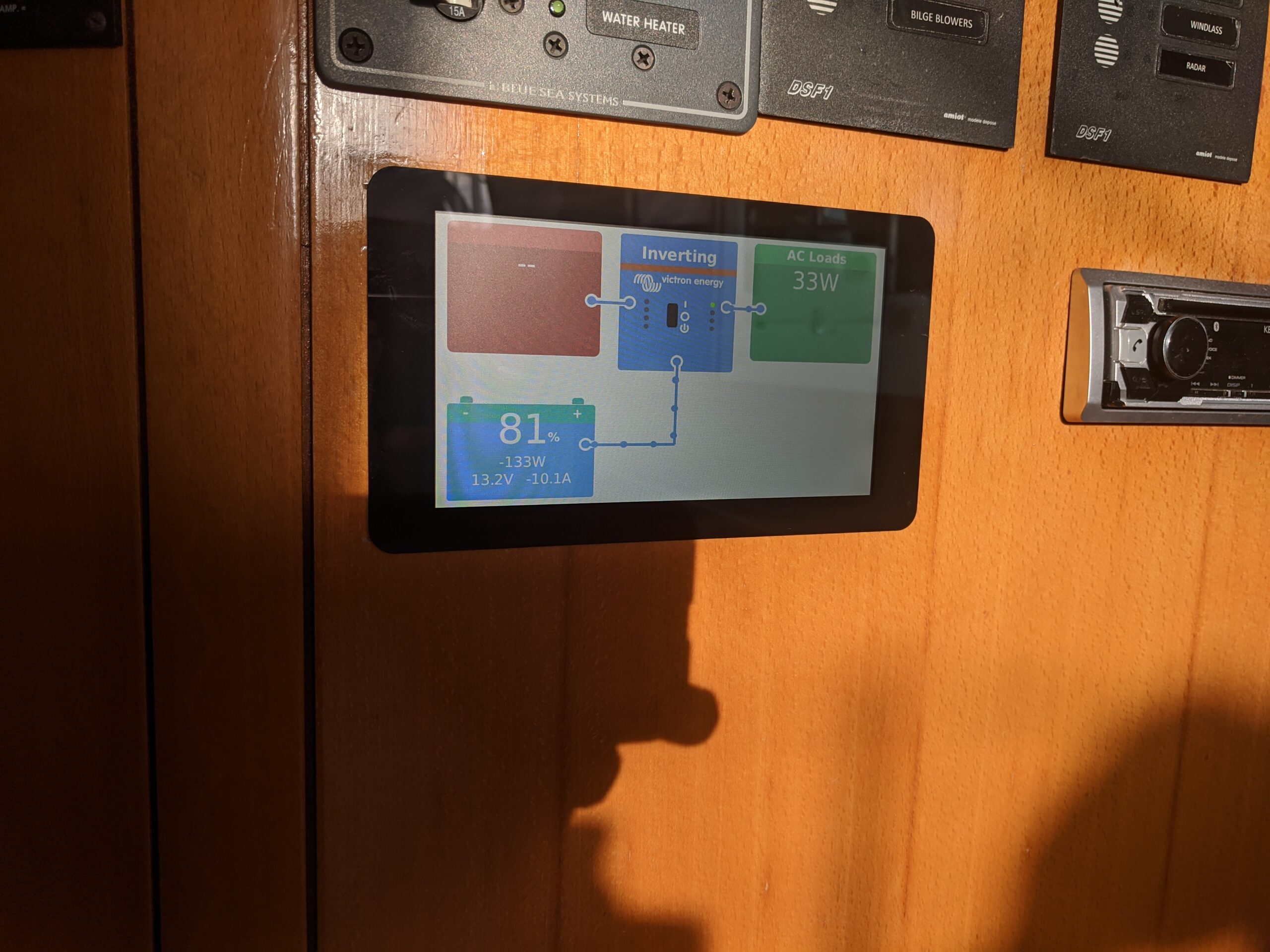This project started out as just me replacing the clutch and re fastening the rusted…

DIY Water Maker
I will be adding a how-to video and full parts list of our home built water maker we use on Mahi. Going on it’s 3rd year of flawless operation. Total cost between $1500 – $2000. This is not ment to be a cheap substitute but is actually the ideal way I have found that a watermaker should be constructed regardless of price. Check back for more info.
The basics of how a home built water maker is plumbed
The easiest way to describe before I have time to create a drawing is to start with the inlet control valve. I used a 4 port valve for this which has 3 ins and 1 out.
The 3 inlets are 1) fresh water from pressurized fresh water system (that passes through a Carbon Filter first) . 2) seawater from sea strainer. 3) hose for pickling solution.
The outlet of this valve is plumbed directly to the inlet side of a lift pump
The outlet side of the lift pump goes to the pre filter housings one has a 20 micron and the other a 5 micron. Then from the filters it feeds to the Karcher Pressure washer.
The high pressure hose of the pressure washer is connected directly to the membrane pressure vessel.
The discharge side of the pressure vessel goes to a T fitting that has a high pressure gauge on it and then to a back pressure control valve. After the back pressure control valve a plastic hose then plumbed to discharge thru hull fitting.
The Product side of the pressure vessel goes to a T fitting that has a TDS sensor in it then to the inlet port of a 3 port selector valve. The other 2 ports go to 1) sample hose. I plumbed this to the galley sink. and 2) fresh water tank. I plumbed this to check valve then to the inlet side of the boat’s main fresh water pump.
From showing this off to all our cruiser friends they all agree that this flow arrangement is the easiest to use, and most practical way to set up a trouble free watermaker.
Parts list:
I Highly recommend you use a dedicated thru hull and seacock for your watermaker. Below is the best you can get in my opinion. Use 3/4″ hose from the thru hull to the strainer and then use 3/8″ push connect fittings and tubing from the strainer to the 4 way selector valve.
I used a 4 port inlet selector valve. This is a brass valve but works fine since the whole system is flushed with fresh water after every use. You can use 1/4″ npt to 3/8 push connect fittings for the supply tubing.
since the whole system is flushed after every use. you can use lower cost feed pumps.
This pressure acuumlator is optional. However after a couple years of using my watermaker I found that the pressure water has some plusating back flow on the inlet side. Hasn’t cuased any problems but by installing this accumulater the system became MUCH quieter. I recomend installing one after the pre filters and before the pressure washer.
Item #1) The high pressure pump. I used the Karcher K4 pressure washer that uses the same water cooled pump as the K5. The K4 is no longer available so you’ll have to spend a few bucks for the extra un needed stuff that the K5 comes with. These pressure washers are the only ones made that are corrosion proof and are water cooled, Allowing for the prolonged continuous use that a water maker requires. We are going on 3 years of trouble free operation.
Karcher uses a patentaned fitting on the pressure hose, so to adapt it so it will attached to a standard 2.5″ x 40″ pressure vessle you will need to buy this whole kit just to get the adapter to 1/4″ npt thread. Or to save money you can just cut the hose and press on a standard 1/4″ male NPT to barb fitting. But I liked to keep everything interchangeable.
The pressure washer gets plumbed directly to the membrane pressure vessel. I was able to find these a little cheaper in the past. But make sure you get one that is rated for atleast 1,000psi. Most lower cost are only rated for 300psi
I like to use the DOW SW-30 25-40 seawater membrane
The discharge side of the pressure membrane needs a high pressure hose connected to it to plumb in 1/4″ npt T fitting with psi gauge attached, then to a high pressure control valve.
The product side of the pressure membrane plumbs to a 3 port valve after going past a TDS sensor and flow meter. I only used 1 probe on this meter, and saving the second probe as a replacement.
These are basically all the major components needed.


